
Angelica Maison
About the Author
Angelica specializes in history in college, and what connects her with historical disciplines straightly is her numismatics passion. Her special interest is American coinage, and in this blog she shares her findings, both technological and historical. Stay tuned for fresh auction records, historical profiles, and even more!
Connect with Angelica



The Star of the Turbulent Time: Legendary Nickel
In the world of coin collecting, a single year can create legends—and for the Jefferson nickel, that year is 1964. Over the last few years, this otherwise ordinary five-cent piece has been making waves across online marketplaces, auction houses, and coin forums. The reason? Some versions of the 1964 Jefferson nickel have sold for thousands—yes, even as high as $15,000.
But what gives a common-looking coin such an extraordinary 1964 Jefferson nickel value?
Let’s answer all the questions in a single article. Is 1964 nickel silver? Is a 1964 nickel worth anything at all? Whether you’re a seasoned numismatist or someone who just stumbled upon a dusty old coin jar, you might be sitting on a small fortune.
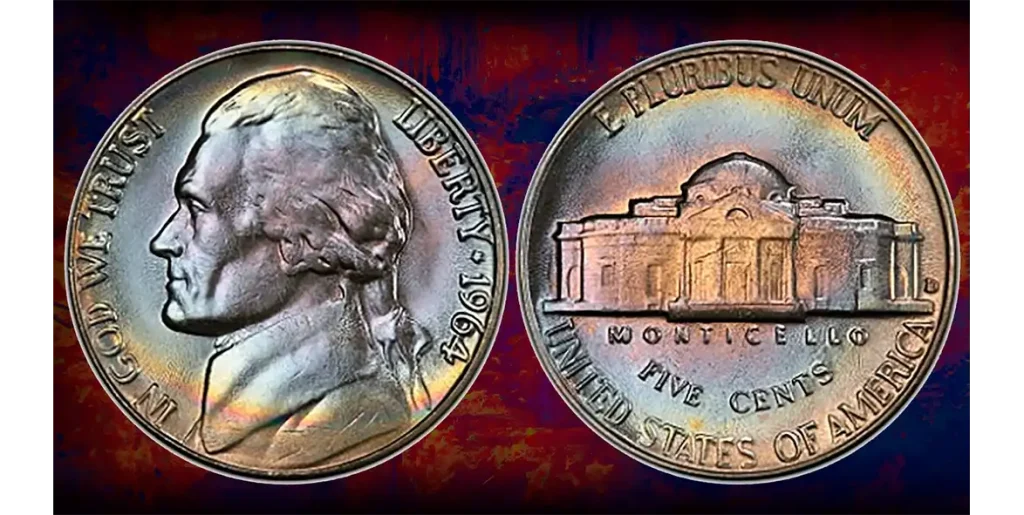
The Coin That Survived a National Crisis
In 1964, the United States Mint was in emergency mode.
The early ‘60s saw the U.S. gripped by a widespread coin shortage. The public, spurred by fears of diminishing silver content and rising coin prices, began hoarding circulating coins. To stabilize the economy and keep coins in circulation, the U.S. Mint was ordered to ramp up production—fast.
In response, more than 2.8 billion nickels were struck bearing the 1964 date—1.02 billion from Philadelphia (no mint mark) and 1.78 billion from Denver (with a “D” mint mark).
This sheer production volume makes the 1964 Jefferson nickel one of the most commonly minted coins in U.S. history.
But it also sets the stage for something more interesting: because so many were made—and quickly—errors, inconsistencies, and a few truly rare variants slipped through.
Understanding the 1964 “Date Freeze”
Here’s a numismatic twist that most people miss: many of the 1964-dated nickels weren’t even made in 1964.
That’s because of a unique government policy known as the “date freeze.” To prevent coin hoarding, the Mint was instructed to keep striking coins with the 1964 date well into 1965 and even 1966. This odd workaround meant billions were created bearing the same year, even as the calendar moved forward.
Why does this matter?
The extended production schedule made room for variations and minting inconsistencies. Combine that with shifting production methods and new dies, and you have a perfect storm for error coins—and collectors love errors.
Where Is the Mint Mark on a 1964 Nickel? Varieties & Their Prices
Before diving into potential 1964 nickel value today, you need to identify the 1964 nickel mint mark location. On the 1964 copper nickel, the mint mark is located on the reverse (tails side), just to the right of Monticello—the historic home of Thomas Jefferson.
Here’s what you might find:
- No Mint Mark: Philadelphia Mint
- “D” Mint Mark: Denver Mint
This is historically significant because 1964 was the last year mint marks were used on nickels until 1968. Afterward, mint marks were temporarily removed as part of the effort to reduce hoarding.
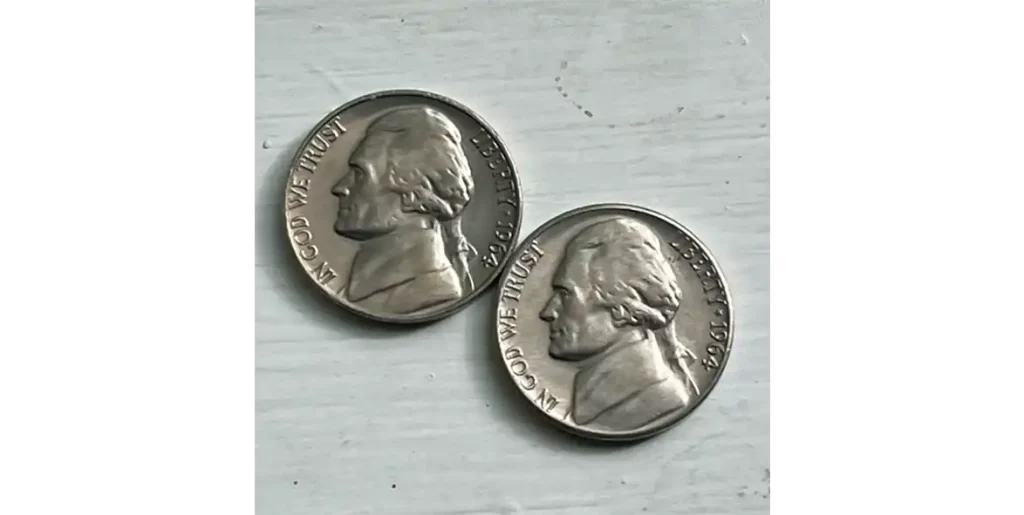
Pro Tip: Check for the “D” closely and scan the 1964 nickel error list with pictures—some valuable misstrikes involve unusual or repunched Denver mint marks that look slightly off or appear doubled.
The Elusive 1964 SMS Nickels: What Are They?
Among the most mysterious and valuable nickels 1964 is a type that wasn’t meant for public release: the Special Mint Set (SMS) 1964 silver nickel.
These aren’t your average coins.
They were never distributed in rolls or circulation. Instead, they appear to have been experimental strikes, possibly made to test the SMS production process used in later years (1965–1967).
What makes a 1964 SMS nickel stand out?
- Distinct satin-like or matte finish
- Sharper strike quality than regular coins
- Fewer than 25 known to exist
- No mirror fields like Proof coins, but noticeably premium surfaces
The rarity of these coins pushes nickel 1964 value into eye-watering territory. In 2016, a high-grade example sold for $32,900 at auction.
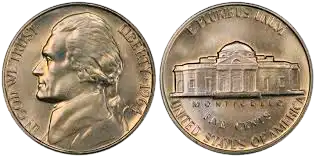
Finding one of these in circulation is extremely unlikely, but it’s not impossible. If you have a coin with unusually clean edges, frosty surfaces, and razor-sharp detail—especially on Monticello and Jefferson’s face—it’s worth getting professionally appraised.
Why Do Some 1964 Nickels Sell for $15,000?
The answer lies in a combination of scarcity, condition, and minting anomalies. Let’s preview some of the high-value factors that will be broken down later in this article:
- Full Steps designation – A grading feature that indicates an unusually crisp strike on Monticello’s base. FS are rare and can be worth hundreds to thousands.
- Repunched Mint Marks (RPMs) – These occur when the mint mark is struck more than once in slightly different positions.
- Die errors – Including off-center strikes, brockages, and multi-strike coins.
- SMS strikes – As noted above, these experimental issues are among the rarest U.S. nickels ever made.
- Proof-like finish from Denver – Though not proofs, some Denver coins have mirror-like fields, increasing 1964 D nickel value dramatically.
Are 1964 Nickels Worth Anything? Price Chart
Let’s begin with the data. The table below outlines the estimated value of a 1964 nickel for three major categories—regular Philadelphia strikes (1964 Jefferson nickel no mint mark), Denver issues (“D” mint mark), and the ultra-rare SMS (Special Mint Set).
All values reflect reputable pricing sources such as NGC (Numismatic Guaranty Company) and PCGS (Professional Coin Grading Service).
| Variety | Circulated | Mint State (MS60) | Full Steps (MS65+) |
| 1964 No Mint Mark | $0.05 | $2–$15 | $65–$5,250+ |
| 1964-D | $0.05 | $2–$16 | $650–$15,100 |
| 1964 SMS | N/A | $32,900 (record sale) | Extremely Rare – Collector Only |
Key Insight: Full Steps show 5 to 6 clearly defined steps at the base of Monticello on the reverse. This precise detail is uncommon and makes a massive difference in 1964 no mint mark nickel value—sometimes over 1,000× more than regular coins.
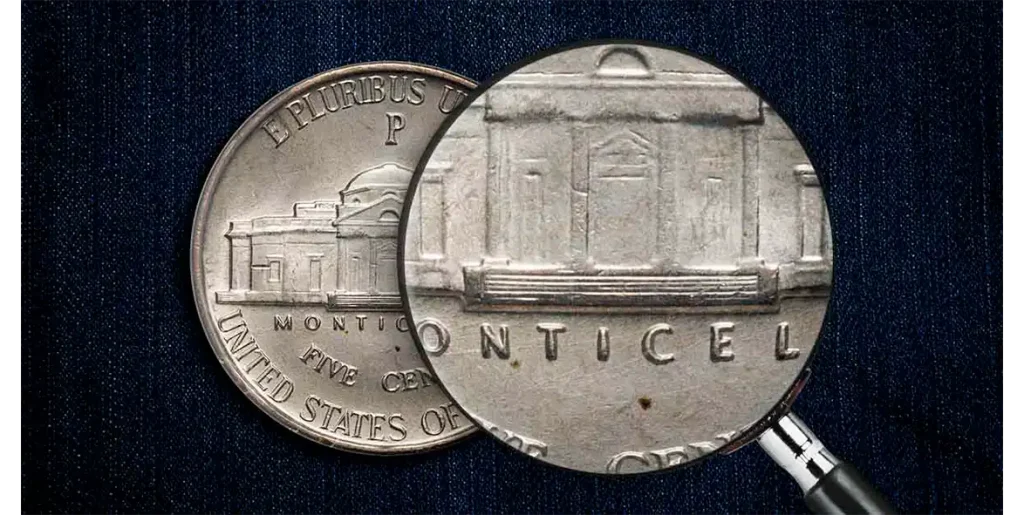
1964 SMS Nickel: A $30,000 Mystery
Let’s return to the unicorn of 1964 nickels—the Special Mint Set (SMS) version.
What makes it so expensive?
- Experimental origin: Believed to be test pieces for SMS production in 1965.
- Not released to the public: Likely retained by Mint employees or researchers.
- Satin finish & sharp strike: No other 1964 nickels match their visual quality.
As of today, fewer than 25 samples are known to exist. If you think you’ve got a 1964 nickel special strike, don’t take it to a pawn shop. Submit it to PCGS or NGC immediately for authentication.
One sold for $32,900, making it one of the most valuable nickels of the 20th century.
Top 5 Most Valuable 1964 Nickel Errors
The market for mint errors is hotter than ever. Here is the 1964 D nickel error list with pictures. Some of them have sold for hundreds or thousands of dollars:
1. Repunched Mint Mark (RPM) – Denver Mint
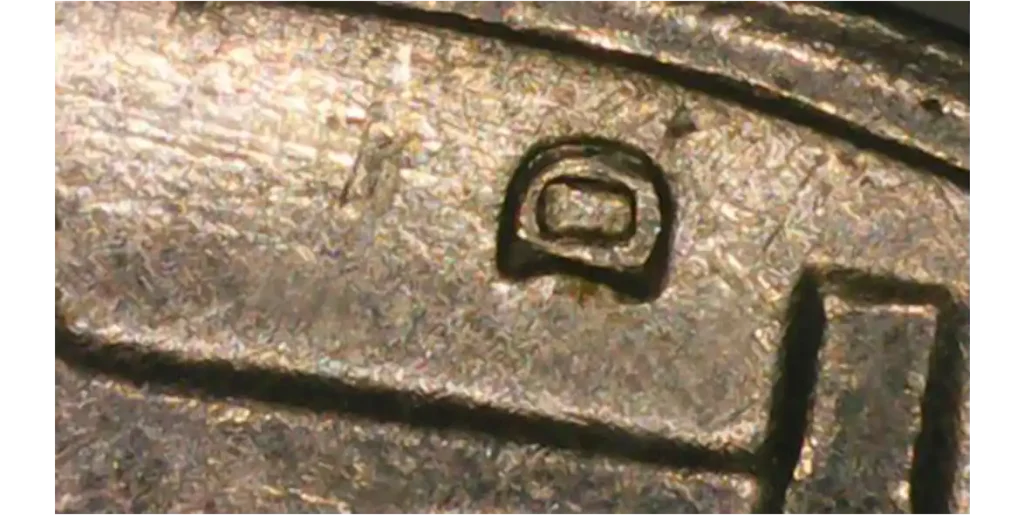
- Look for doubled or sideways “D” marks.
- Price: 1964 nickel D mint mark on back value goes up to $15,275 at auction.
- Why it’s rare: Misalignment in minting dies creates a bold, visible duplication.
2. Full Steps Designation
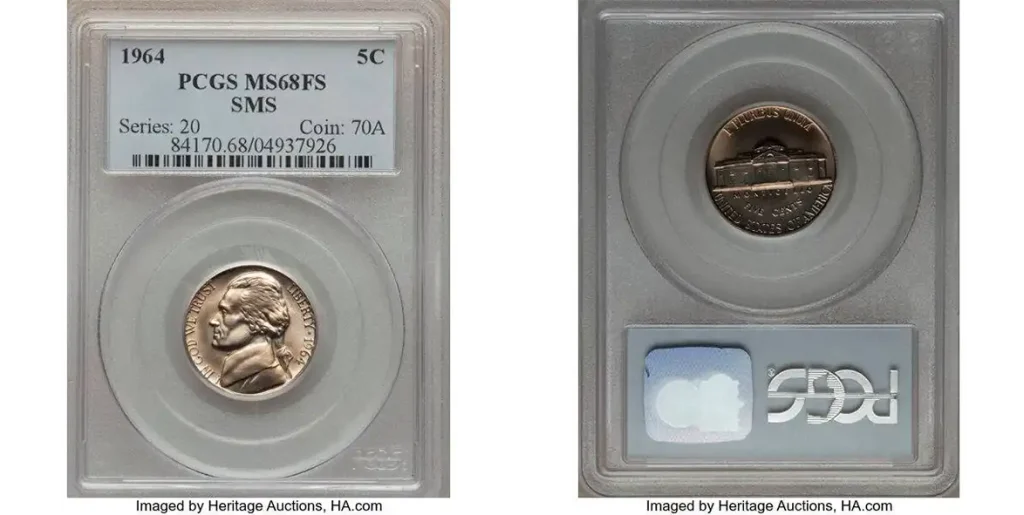
- Requires at least 5 unbroken steps at Monticello’s base.
- Price: Regular FS nickels = $650+, top-grade FS = over $5,000.
- Pro Tip: Most nickels don’t qualify. A “Full Steps” designation on a 1964-D is a jackpot.
3. Proof-Like Denver Coins
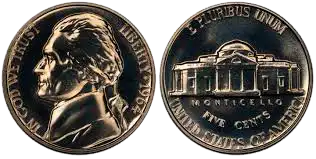
- Mirror-like surfaces with frosted relief.
- Price: Up to $4,100+ in high-grade examples.
- Where to look: Focus on shine and clarity—especially from rolls or sealed sets.
4. Four Strikes / Off-Center Errors
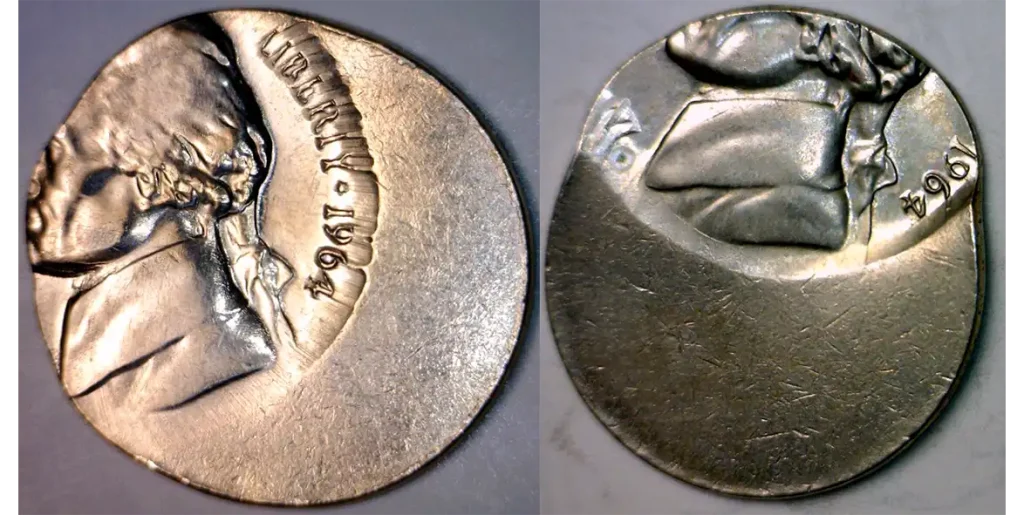
- Coin struck multiple times or way off-center.
- Price: Around $1,200+, depending on the severity.
- Why it matters: These dramatic errors are easy to spot and visually impressive.
5. Late-Stage Brockage
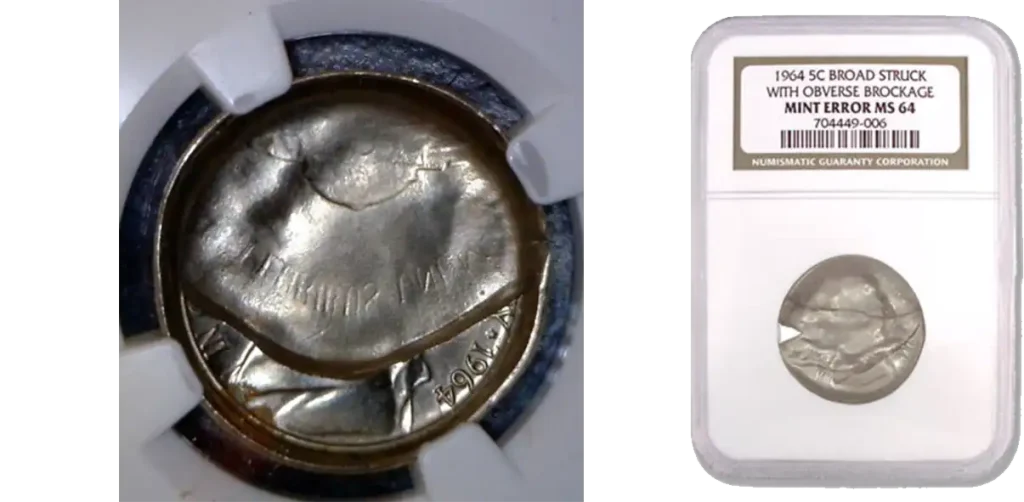
- One side shows a distorted, mirror-image design.
- Price: Collectors will pay premium—especially if it’s clearly defined.
- Watch for: Deep indentation, blurred design, or missing features.
Are 1964 Nickels Silver? Debunking the Myth
Let’s clear up a common misconception about the 1964 nickel silver content.
Some online listings claim that 1964 nickels are valuable because they contain silver. That’s false. Standard silver nickel years 1964 are composed of:
- 75% Copper
- 25% Nickel
Only nickels struck during WWII (1942–1945) have a 35% silver composition, due to wartime metal conservation. The confusion exists because 1964 was the final year for silver dimes and quarters—not nickels.
So, unless your coin is from that short-lived SMS set, and the answer to ‘is a 1964 nickel silver?’ is definitely no. At the end, how much is a 1964 nickel worth is defined only by its specifics, not melt value.
How Much Is a Nickel from 1964 Worth According to Grading Experts
Professional grading is what separates pocket change from 1964 nickels worth money on auctions. If it looks clean, lustrous, and sharply struck, you could be holding a gem.
Grading Levels Explained:
- Circulated – Worn coin with heavy signs of use. Minimal 1964 nickel no mint mark value.
- XF (Extremely Fine) – Slight wear on high points. Minor value.
- AU (About Uncirculated) – Almost mint, light rub. Small premium.
- MS60–MS64 – Uncirculated, some marks, good luster. 1964 nickel value no mint mark rises.
- MS65+ (Gem Uncirculated) – Strong eye appeal, almost flawless. Rare and highly valuable.
- Full Steps (FS) – The golden standard. Perfect detail on Monticello’s steps = top-tier pricing.
Tip: Use a magnifier or loupe and examine the steps beneath Monticello. If they’re complete and unbroken—submit for professional grading to see what is a 1964 nickel worth.
Should You Try Grading?
The result of professional grading transforms your coin from a “maybe” to a verified asset.
Cost:
- $30–$70 per coin for basic submission
- Worth it only if the coin could be worth over $150 ungraded
Grading Services to Trust:
- PCGS (Professional Coin Grading Service)
- NGC (Numismatic Guaranty Company)
They’ll assign a numerical grade (MS60–MS70), determine Full Steps status, and authenticate any errors. This certification increases buyer confidence and can dramatically raise the final sale price.
Where to Sell a Valuable 1964 Nickel
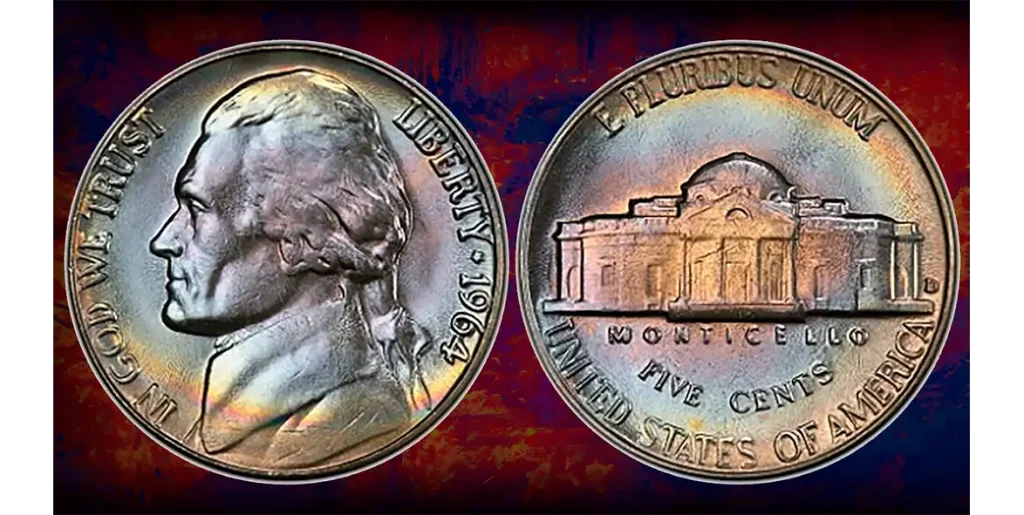
Not all selling methods are equal. The right platform depends on your coin’s grade, rarity, and estimated value of 1964 nickel.
1. Auction Houses
Best for: High-grade or rare-error coins valued at $1,000+
- Top Choices: Heritage Auctions, Stack’s Bowers, GreatCollections
- Pros: Reaches elite collectors, high visibility, expert grading included
- Cons: Commission fees (10–20%), slower payout
Example: A 1964-D Full Steps nickel graded MS66 by PCGS fetched $15,105 via Heritage Auctions.
2. eBay
Best for: Mid-range coins valued between $10 and $500
- Pros: Global audience, seller control, fast turnaround
- Cons: Fees (~13%), must manage shipping/returns
- Tip: Use high-quality photos and include grade/certification in the title to boost visibility.
3. Online Coin Marketplaces
Best for: All levels of value, especially certified coins
- Try: Collectors.com, MA-Shops, or VCoins
- These platforms cater specifically to numismatists and often draw serious buyers.
4. Avoid: Local Pawn Shops & Casual “We Buy Coins” Stores
Why?
- They often pay below-market rates
- Lack grading expertise
- May not recognize valuable rare 1964 nickel error or Full Steps details Pro Tip: Always get a second opinion before selling. A dealer might offer $20 for a coin that’s worth $2,000.
Use Coin ID Scanner to Save Time and Spot Value
Don’t rely on guesswork. One of the best modern tools for collectors and casual finders is the Coin ID Scanner app, with its library of thousands of coins from all over the world and an AI-based recognizing algorithm.
How to use it:
- Take a clear photo of your 1964 no mint nickel.
- Wait until the app compares it with the library.
- Get instant feedback on:
- Identification
- Estimated value range based on current auction sales
- Add a coin into your digital collection.
This saves hours of research and can help you quickly flag coins worth sending in for grading.
Quick Tips: Identifying & Selling a $15,000 Gem
Here’s a rapid recap of how to land that once-in-a-lifetime 1964 nickel:
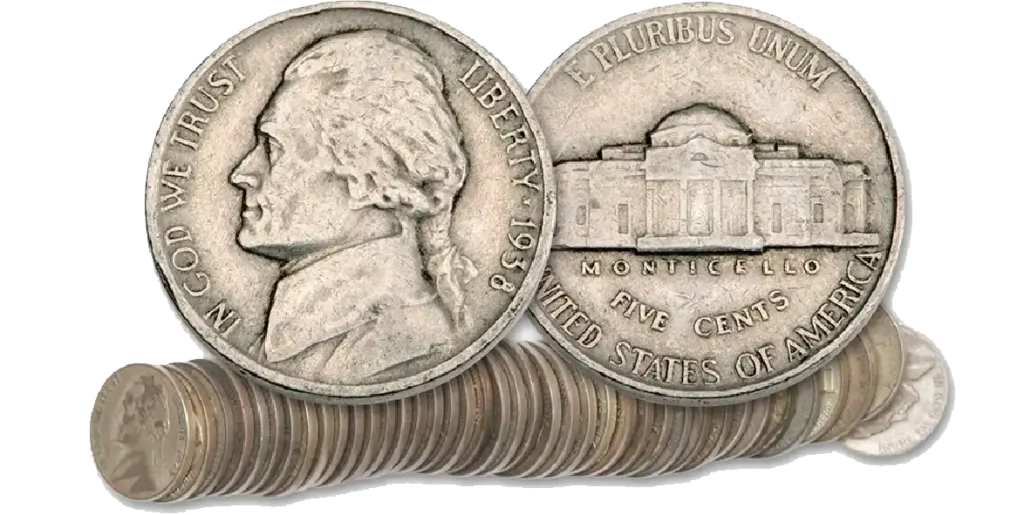
1. Look for Full Steps (FS) on the reverse
– Especially on Denver mint
– Minimum value in MS65+ can exceed $600 and stretch to $15,000+
2. Watch for rare error coin 1964 nickel
– Repunched Mint Marks (RPM), off-center strikes, and proof-like finishes, look patiently through the 1964-D nickel error list
– These are less common but extremely valuable
3. Beware of silver myths
– Regular samples do not contain silver
4. Use tools, not guesswork
– Apps like Coin ID Scanner help identify value quickly and accurately without spending too much on grading
5. Sell smart
– High-value coins go to auction houses
– Mid-tier coins thrive on eBay or collector marketplaces
– Avoid lowball local buyers
In most cases, it is worth exactly what it says: five cents.
But with the right combination of mint mark, strike quality, errors, and grading, that same coin could be worth hundreds, thousands, or even $15,000.
If you’ve got a stack of old nickels, don’t ignore them. Use modern tools like Coin ID Scanner, examine each one carefully, and educate yourself on key factors like how much silver is in a 1964 nickel. Your next trip to the coin jar might just turn into a payday.